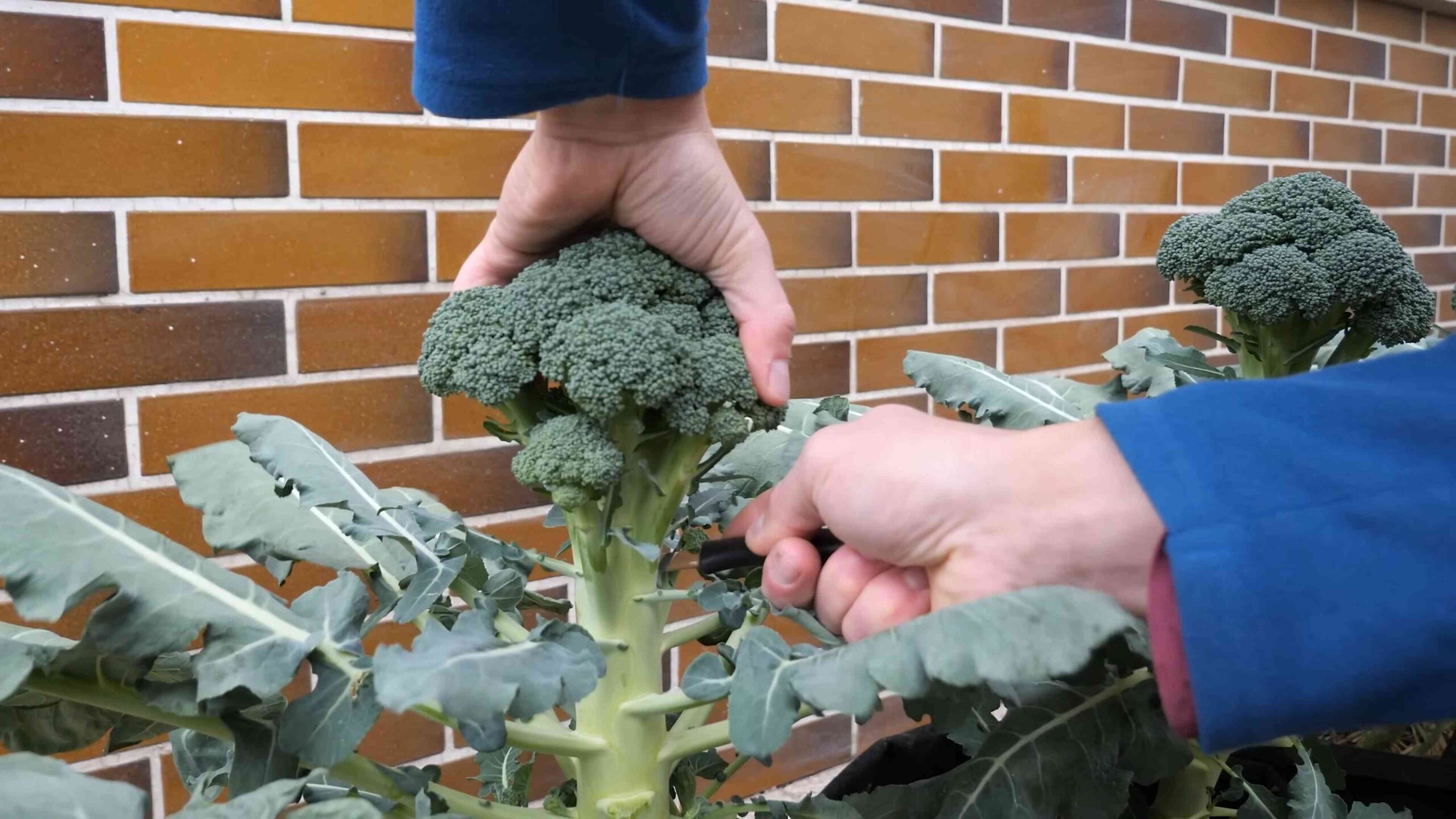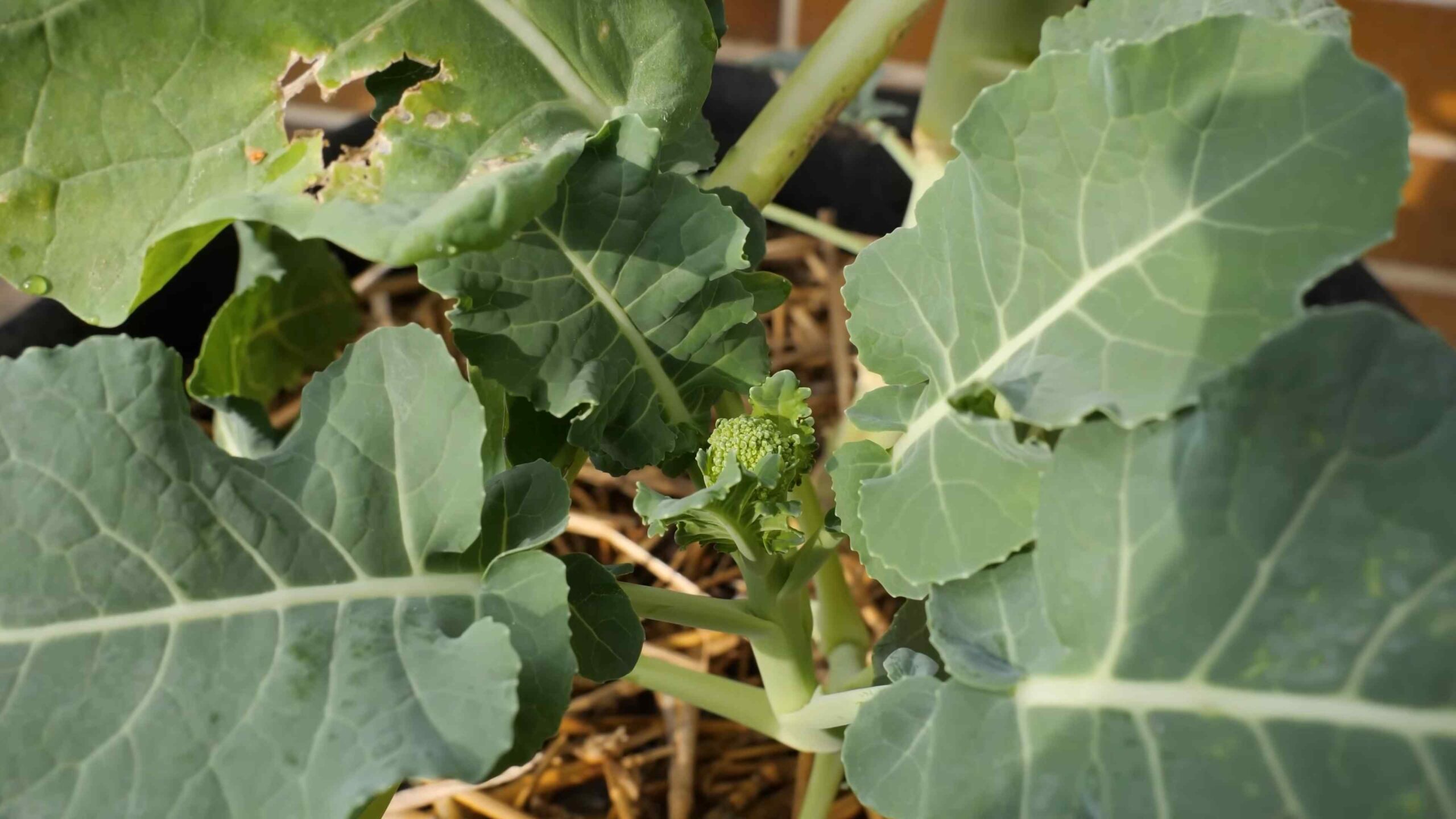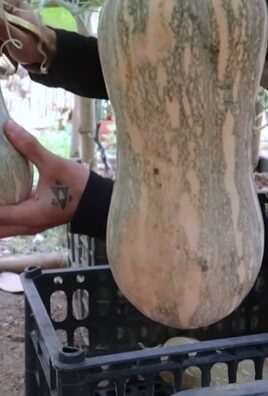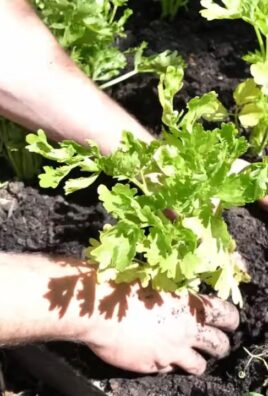Grow Broccoli at Home? Absolutely! Imagine stepping into your backyard and harvesting fresh, vibrant broccoli heads, ready to be steamed, roasted, or tossed into a delicious salad. It’s not just a dream; it’s an achievable reality with a few simple tricks and a little DIY spirit. For centuries, broccoli, a member of the brassica family, has been cultivated for its nutritional power and unique flavor, dating back to the Roman Empire. Now, you can tap into that rich history and bring this superfood directly to your table.
But why bother with the effort? Well, store-bought broccoli can often be expensive and lack the freshness and flavor of homegrown produce. Plus, there’s an immense satisfaction in nurturing a plant from seed to harvest. This DIY guide is your key to unlocking the secrets of successfully growing broccoli at home, even if you have limited space or gardening experience. I’m here to show you how to avoid common pitfalls, maximize your yield, and enjoy the freshest, most flavorful broccoli you’ve ever tasted. Let’s get our hands dirty and grow broccoli at home!

Growing Broccoli at Home: A Beginner’s Guide
Hey there, fellow gardening enthusiasts! I’m so excited to share my experience with growing broccoli at home. It’s surprisingly easier than you might think, and the taste of homegrown broccoli is absolutely unbeatable. Forget those bland supermarket florets – we’re talking vibrant green, nutrient-packed goodness straight from your backyard!
Choosing Your Broccoli Variety
Before we dive into the nitty-gritty, let’s talk about broccoli varieties. There are tons to choose from, each with its own unique characteristics. Here are a few of my favorites:
* Calabrese: This is your classic broccoli, producing a large central head. It’s a reliable choice and a great option for beginners.
* Waltham 29: Another popular variety known for its cold hardiness. If you live in an area with cooler temperatures, this is a good bet.
* DiCicco: This variety produces smaller central heads followed by numerous side shoots, giving you a longer harvest period.
* Purple Sprouting Broccoli: For something a little different, try purple sprouting broccoli. It’s incredibly nutritious and has a slightly sweeter flavor.
Consider your local climate and growing season when making your selection. Seed packets usually provide helpful information about the best time to plant and expected harvest time.
Starting Broccoli from Seed vs. Transplants
You have two main options for getting your broccoli plants started: from seed or from transplants.
* Starting from Seed: This gives you more control over the entire process and is generally more economical. However, it requires a bit more time and effort.
* Using Transplants: This is a quicker and easier option, especially if you’re short on time or space. You can purchase transplants from your local garden center.
I personally prefer starting from seed because I enjoy the whole process, but transplants are a perfectly fine option, especially for beginners.
Getting Started: From Seed to Seedling
If you’re opting to start from seed, here’s what you’ll need:
* Broccoli seeds: Choose your desired variety.
* Seed starting trays or small pots: These should have drainage holes.
* Seed starting mix: This is a light, sterile mix that’s ideal for germinating seeds.
* Watering can or spray bottle: For gentle watering.
* Grow lights (optional): If you don’t have a sunny windowsill.
Now, let’s get planting!
1. Sow the Seeds: Fill your seed starting trays or pots with seed starting mix. Moisten the mix thoroughly. Sow 2-3 seeds per cell or pot, about 1/4 inch deep.
2. Provide Light and Warmth: Place the trays or pots in a warm location (around 70-75°F) with plenty of light. A sunny windowsill works well, or you can use grow lights.
3. Keep the Soil Moist: Water gently whenever the soil surface feels dry. Avoid overwatering, which can lead to damping off (a fungal disease that can kill seedlings).
4. Thin the Seedlings: Once the seedlings have their first true leaves (the second set of leaves), thin them to one plant per cell or pot. Choose the strongest, healthiest-looking seedling and snip off the others at the soil line.
5. Harden Off the Seedlings: Before transplanting your seedlings outdoors, you need to “harden them off.” This process gradually acclimates them to outdoor conditions. Start by placing the seedlings outdoors in a sheltered location for a few hours each day, gradually increasing the amount of time they spend outside over the course of a week or two.
Preparing Your Garden Bed
Broccoli thrives in well-drained soil that’s rich in organic matter. Here’s how to prepare your garden bed:
1. Choose a Sunny Location: Broccoli needs at least 6 hours of sunlight per day.
2. Amend the Soil: Dig in plenty of compost or well-rotted manure to improve soil fertility and drainage.
3. Check the Soil pH: Broccoli prefers a soil pH between 6.0 and 7.0. You can test your soil pH with a soil testing kit. If your soil is too acidic, you can add lime to raise the pH.
4. Create Raised Beds (Optional): Raised beds can improve drainage and warm up the soil more quickly in the spring.
Transplanting Your Broccoli Seedlings
Once your seedlings are hardened off and your garden bed is prepared, it’s time to transplant!
1. Choose the Right Time: Transplant your broccoli seedlings outdoors 2-3 weeks before the last expected frost in your area. You can also plant a fall crop of broccoli in late summer.
2. Space the Plants Properly: Space the plants 18-24 inches apart in rows that are 24-36 inches apart. This gives them enough room to grow and allows for good air circulation.
3. Dig the Holes: Dig holes that are slightly larger than the root balls of the seedlings.
4. Gently Remove the Seedlings: Carefully remove the seedlings from their trays or pots, being careful not to damage the roots.
5. Plant the Seedlings: Place the seedlings in the holes and backfill with soil. Gently firm the soil around the base of the plants.
6. Water Thoroughly: Water the newly transplanted seedlings thoroughly.
Caring for Your Broccoli Plants
Now that your broccoli plants are in the ground, it’s important to provide them with the care they need to thrive.
1. Water Regularly: Broccoli needs consistent moisture, especially during hot, dry weather. Water deeply whenever the soil surface feels dry.
2. Fertilize: Fertilize your broccoli plants every 2-3 weeks with a balanced fertilizer. You can also side-dress with compost or well-rotted manure.
3. Weed Regularly: Keep the garden bed free of weeds, which can compete with your broccoli plants for nutrients and water.
4. Mulch: Apply a layer of mulch around the plants to help retain moisture, suppress weeds, and regulate soil temperature.
5. Protect from Pests: Broccoli is susceptible to a few common pests, including cabbage worms, aphids, and flea beetles. Inspect your plants regularly and take action if you see any signs of infestation. You can use organic pest control methods, such as insecticidal soap or neem oil. Row covers can also be used to protect your plants from pests.
Harvesting Your Broccoli
The moment you’ve been waiting for! Harvesting your homegrown broccoli is incredibly rewarding.
1. Harvest When the Head is Firm and Tight: The central head of broccoli is ready to harvest when it’s firm, tight, and the florets are still closed. If the florets start to open and turn yellow, it’s time to harvest immediately.
2. Cut the Head: Use a sharp knife to cut the head from the plant, leaving a few inches of stem.
3. Encourage Side Shoots: After harvesting the central head, the plant will often produce side shoots, giving you a second harvest.
4. Store Properly: Store your harvested broccoli in the refrigerator for up to a week.
Troubleshooting Common Broccoli Problems
Even with the best care, you might encounter a few problems along the way. Here are some common issues and how to address them:
* Buttoning: This is when the broccoli head forms prematurely and remains small. It’s often caused by stress, such as lack of water or nutrients. Make sure your plants are getting enough water and fertilizer.
* Yellowing Florets: This indicates that the broccoli head is overripe. Harvest immediately.
* Pest Infestations: As mentioned earlier, broccoli is susceptible to a few common pests. Inspect your plants regularly and take action if you see any signs of infestation.
* Clubroot: This is a fungal disease that causes swollen, distorted roots. It’s more common in acidic soils. Test your soil pH and add lime if necessary.
Enjoying Your Homegrown Broccoli
Congratulations! You’ve successfully grown your own broccoli. Now it’s time to enjoy the fruits (or rather, vegetables) of your labor.
Homegrown broccoli is delicious steamed, roasted, stir-fried, or even eaten raw. Add it to salads, soups, or pasta dishes. The possibilities are endless!
I hope this guide has inspired you to try growing broccoli at home. It’s a rewarding experience that will provide you with fresh, healthy vegetables for your table. Happy gardening!

Conclusion
So, there you have it! Growing broccoli at home isn’t just a gardening project; it’s a gateway to fresher, more flavorful meals and a deeper connection with the food you eat. We’ve walked through the essential steps, from selecting the right variety to warding off common pests, and hopefully, demystified the process along the way.
Why is this DIY trick a must-try? Because store-bought broccoli simply can’t compare to the vibrant green, crisp texture, and slightly sweet taste of homegrown. You control the growing conditions, ensuring your broccoli is free from unwanted chemicals and harvested at its peak of ripeness. Plus, there’s an undeniable satisfaction in nurturing a plant from seed to table. It’s a rewarding experience that connects you to the natural world and provides a healthy, delicious addition to your diet.
But don’t stop there! Experiment with different broccoli varieties to find your favorite. Try growing Romanesco broccoli for its stunning fractal patterns and nutty flavor, or explore sprouting broccoli for a continuous harvest of tender shoots. Consider companion planting with herbs like rosemary or thyme to deter pests naturally and enhance the flavor of your broccoli. You can also try succession planting, sowing seeds every few weeks, to ensure a continuous supply of fresh broccoli throughout the growing season.
And remember, growing broccoli at home is a learning process. Don’t be discouraged if you encounter challenges along the way. Every gardener faces setbacks, but with a little patience and persistence, you’ll be harvesting your own delicious broccoli in no time.
We wholeheartedly encourage you to give this DIY project a try. It’s easier than you might think, and the rewards are well worth the effort. Once you’ve tasted the difference between homegrown and store-bought broccoli, you’ll never look back.
We’d love to hear about your experiences! Share your tips, successes, and even your challenges in the comments below. Let’s build a community of home broccoli growers and learn from each other. Happy gardening!
Frequently Asked Questions (FAQs)
What is the best time of year to start growing broccoli at home?
The best time to start growing broccoli depends on your climate. Broccoli is a cool-season crop, meaning it thrives in temperatures between 60°F and 70°F (15°C and 21°C). In areas with mild winters, you can plant broccoli in the fall for a winter or early spring harvest. In colder climates, start seeds indoors 6-8 weeks before the last expected frost and transplant them outdoors in the spring. You can also plant a second crop in late summer for a fall harvest. Pay attention to your local weather patterns and frost dates to determine the optimal planting time for your region.
How much sunlight does broccoli need?
Broccoli requires at least 6 hours of direct sunlight per day to thrive. Choose a planting location that receives full sun for the majority of the day. If you live in a particularly hot climate, some afternoon shade can be beneficial to prevent the broccoli heads from bolting (going to seed prematurely). Insufficient sunlight can result in leggy plants with small, underdeveloped heads.
What kind of soil is best for growing broccoli?
Broccoli prefers well-drained, fertile soil that is rich in organic matter. The ideal soil pH is between 6.0 and 7.0. Before planting, amend your soil with compost, aged manure, or other organic materials to improve drainage, fertility, and water retention. A soil test can help you determine the pH and nutrient levels of your soil and guide you in making necessary amendments.
How often should I water my broccoli plants?
Broccoli needs consistent moisture to produce large, healthy heads. Water deeply and regularly, especially during dry periods. Aim to keep the soil consistently moist but not waterlogged. A good rule of thumb is to water when the top inch of soil feels dry to the touch. Mulching around your broccoli plants can help retain moisture and suppress weeds.
What are some common pests and diseases that affect broccoli, and how can I control them?
Broccoli is susceptible to several pests and diseases, including cabbage worms, aphids, flea beetles, clubroot, and downy mildew. To control pests, consider using row covers to protect your plants, handpicking pests off the leaves, or applying insecticidal soap or neem oil. To prevent diseases, ensure good air circulation, avoid overhead watering, and practice crop rotation. If you suspect your broccoli plants have a disease, consult a local gardening expert or extension service for diagnosis and treatment recommendations.
When is broccoli ready to harvest?
Broccoli is ready to harvest when the central head is firm, tight, and a deep green color. The individual florets should be tightly closed. Harvest the head before the florets begin to open and turn yellow. Use a sharp knife to cut the head from the plant, leaving several inches of stem. After harvesting the central head, the plant will often produce smaller side shoots that can be harvested later.
Can I grow broccoli in containers?
Yes, you can grow broccoli in containers, but you’ll need to choose a large container (at least 5 gallons) to accommodate the plant’s root system. Use a high-quality potting mix and ensure the container has good drainage. Container-grown broccoli may require more frequent watering and fertilization than broccoli grown in the ground.
How do I fertilize my broccoli plants?
Broccoli is a heavy feeder and benefits from regular fertilization. Apply a balanced fertilizer (e.g., 10-10-10) at planting time and then side-dress with a nitrogen-rich fertilizer every few weeks during the growing season. You can also use organic fertilizers such as compost tea or fish emulsion. Follow the instructions on the fertilizer package for application rates.
Why is my broccoli bolting (going to seed)?
Broccoli bolts when it experiences stress, such as extreme temperatures, drought, or nutrient deficiencies. Bolting causes the florets to open and the head to become bitter. To prevent bolting, choose bolt-resistant varieties, provide consistent moisture, fertilize regularly, and protect your plants from extreme temperatures.
Can I eat the broccoli leaves?
Yes, broccoli leaves are edible and nutritious. They have a slightly bitter taste similar to kale or collard greens. You can cook them like other leafy greens, such as sautéing, steaming, or adding them to soups and stews. Choose young, tender leaves for the best flavor.





Leave a Comment